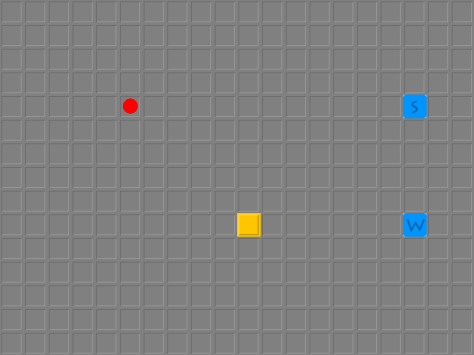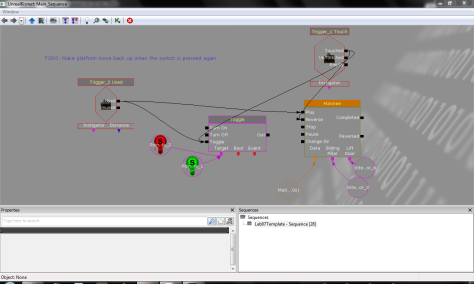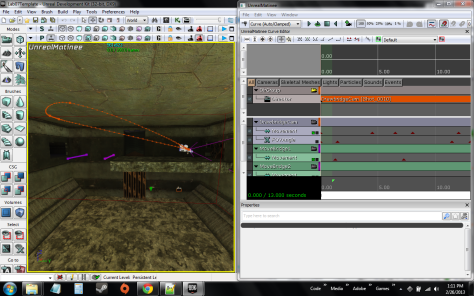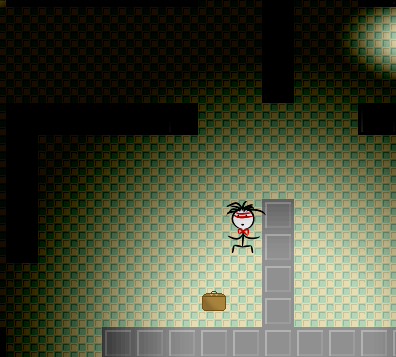With the launch of Flashpunk’s new website, some of us in the community thought it would be fun to have a game jam with a “Welcome Home” theme. Jake and I teamed up for this, and made Bit Cave in about 72 hours. This is also my May entry for One Game a Month.
You can download and play it here: Bit Cave Download

The game is about navigating a large cave system (which is randomly generated), searching both for a way out, and for lost mementos scattered about the caves. You can’t just fly around and grab what you need though. It’s very cold and dark in the caves. Your body temperature is steadily decreasing, and if you fall into water, it is going to drop rapidly. Fortunately, you can find little campfires in the caves that can bring your temperature back to normal. It still isn’t that easy though, because one campfire may be a long ways away from the one you’re currently sheltered at, and you may have to swim through water to get to it!
We were trying to think more outside the box with this game. We were playing around with a dungeon generator, meant for top-down roguelike games. We thought it would be cool to use the same dungeon generator, but with a side view, trying to get up and out of the caves. Doing this made all the little crevices and inconsistencies actually interesting, as you’re trying to traverse them. The water system was added fairly early on. We didn’t have a clear purpose for it, but we thought it would be cool. The body temperature mechanic came a bit later, and that’s when we found a use for the water. As mentioned above, the cave system is randomly generated each time you restart the game. The waterfalls/lakes are also randomly generated, and the mementos and campfires are spawned in random locations.
Adding narrative to a game is very difficult to do for a game jam, but we attempted to do so here, though it’s not incredibly apparent what’s going on. The idea is that you are this man who had a wonderful life with his wife, but something happened and he lost her. The man now finds himself in these vast caves, in search of not only a means of survival, but also what remains of his past life with his wife. There is their wedding photo, a tube of her lipstick, some roses he bought for her that have wilted with age, the first love letter he received from her, and the engagement ring he bought for her. These are all that remain of her, the only things left to preserve her memory. These are the mementos he is trying to collect.
Now, he can just zip through the caves and head straight for the exit. He will survive, but he will have left behind all that remains of his wife and his memories of her. When he does escape the caves, he will come home to his old house. If he faithfully gathered all the mementos, he will see them placed where they would be if she were still with him. If he passed them by, though, there will be an uncomfortable emptiness to the house; her memories will be gone.
In reality, this narrative is simply a way to dress up the collection of items in the caves to make it more interesting. Something we added in is, depending on how many mementos you collect, the landscape at the end of the game will change. The more mementos collected, the happier it will look. The fewer collected, the more depressing it will look. This is something that people probably will not pick up on unless they are very observant and play multiple times, but we enjoy knowing it’s there.
To wrap up, here is what I worked on for this project:
- All art
- All audio
- Campfires
- Body temperature mechanic
- Jetpack mechanic
- Inventory system
- Minimap system
- Everything in the outside world
Special thanks to Alex Larioza for his super cool tile lighting system, which fit our retro vibe quite well!
















